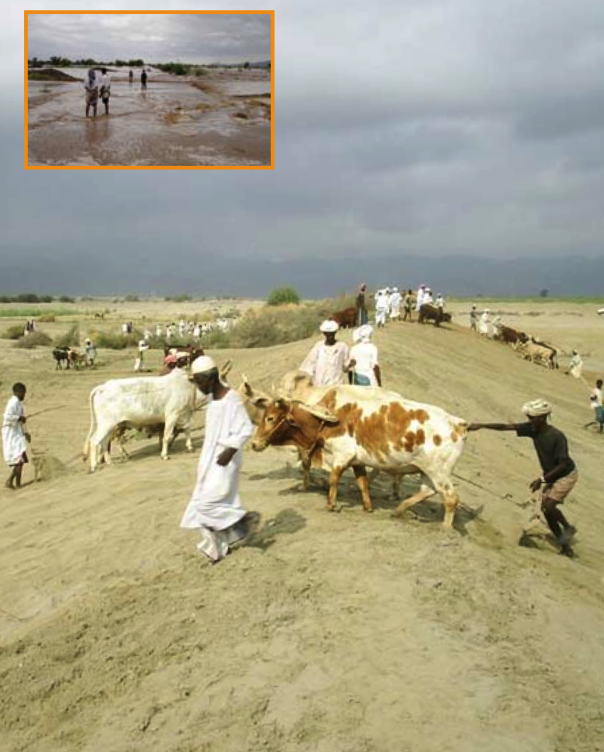Irrigation - Spate irrigation
| |
The management of sediment loads is as important as the management of flood water. Soil moisture conservation (recharge of shallow aquifers) is the key to high productivity. Spate irrigation is an ancient form of water management in arid and semi-arid environments, practised most widely in Pakistan, but also in Asia, Yemen, the Horn of Africa and North Africa. It is typically applied where highland plains meet alluvial flat slopes and where annual rainfall is erratic, often below 200 mm. In Pakistan, sporadic floods from temporary rivers are diverted and spread over a large area of land by earthen bunds, about 1 km long, several metres high and up to 20 m wide at the base. Near the mountains, the bunds divert part of the fast flowing flood; lower down they divert the entire flow. Water is guided through a system of flood channels to the bunded fields, often as large as 15 hectares, sub-divided into sections. The collected water is used for irrigation, the filling of water ponds and the recharge of groundwater. As such, spate irrigation provides considerable opportunities for reviving and improving the agricultural productivity and livestock production.
History and social context
Suitable conditions
| Advantages | Disadvantages/limitations |
|---|---|
| - Large systems can be constructed manually with local materials and small civil works. - Control over floodwater and sedimentation reduces flooding and gullying downstream. |
- Spate irrigation and pond farming systems are risk-prone, due to the unpredictable floods and frequent changes in the riverbeds from where water is diverted. - Spate irrigation is simply a method of using water optimally. It does not control the supply of water or prevent shortage of water, which can cause big income fluctuations |
Technical specification
Operation
Maintenance
Manufacturing
Construction and maintenance requires considerable human and animal labour or the use of tractors and bulldozer and consequently a strong local organization.
Estimated Lifespan
Cost
- Material (improved traditional structures): US$ 10-300/ha.
- Operation and maintenance: US$ 10-40/ha per year.
Country experiences
Manuals
Movies
External Links
References

|

